The Nissan Rogue sells pretty well. This is hard – at first glance – to understand. It does not look very roguish, for one. And it costs more to start than rivals like the Hyundai Tucson ans Mazda CX-5.
It also has the smallest engine you’ll find in any crossover its size – as well as some motorcycles.
Just three cylinders and only 1.5 liters.
So why do people buy the Rogue over others in the class?
Probably for at least two reasons . . .
What It Is
The Rogue is Nissan’s very popular compact-sized crossover. Like the models it competes with – including the Mazda CX-5, Hyundai Tucson, Toyota RAV4 (and its re-badged/re-sold rival, the Mitsubishi Outlander – which is a Rogue under its Mitsubishi skin) the Rogue has gradually grown in size over the years to the point that it is almost mid-sized now. 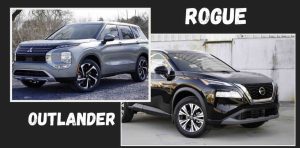
Unlike its rivals, the Rogue comes standard with smallest – but strongest – standard engine in the class.
It also boasts the highest mileage in the class, too. Those two reasons are why so many people end up buying a Rogue – even though it’s a bit more expensive than most of its rivals.
Prices start at $27,630 for the front-wheel-drive S trim; adding the available all-wheel-drive system bumps the MSRP up to $28,860.
A top-of-the-line Platinum trim with AWD stickers for $38,640.
For reference, a ’23 Mazda CX-5 starts out at $26,700. The Hyundai Tucson lists for $26,450 to start. 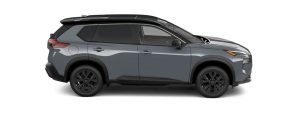
What’s New For 2023
SL and Platinum trims come standard with Amazon Alexa compatibility and there’s a new Midnight appearance package available for the SV trim that includes gloss black 18 inch wheels and roof rails as well as upgraded faux leather upholstery inside.
What’s Good
Standard engine is strong – and fuel efficient.
More space inside for cargo than several rivals.
Can pull a light (1,500 lb.) trailer.
What’s Not So Good
Standard engine is really small – and relies on a lot of boost to make its power.
Costs about $1,000 more to start than rivals like the Tucson and CX-5, which eats away at the gas money you save.
Several rivals (including Tucson and CX-5) can tow a 2,000 lb. trailer.
Under The Hood
It used to be how low can you go? – in reference to the Limbo Under. Now it’s how small can you go.
The Rogue itself isn’t. More to the point, it’s not light. Though nominally a “compact” vehicle, it weighs 3,452 pounds – which is only 300 pounds less than this writer’s 1976 Pontiac Trans-Am, which is a V8-powered ’70s-era muscle car. The old TA weighs about 3,700 pounds – and was considered overweight when it was new.
But it did come with a big (7.5 liters) V8 to move all that weight.
The Rogue comes with just 1.5 liters (and only three cylinders) to move nearly as much weight. Which it can do because this tiny engine – not much larger than many motorcycle engines – makes 201 horsepower, which is almost exactly as much power as the 7.5 liter (455 cubic inch, pre-Metric system) V8 made when it was new, back in ’76.
And the Rogue’s little three only uses about a fourth as much gas.
The Trans-Am is in the single digits in city driving and barely registers mid-teens once rolling. It needs a 21 gallon tank (full) to avoid having to stop for gas at every other red light, just about. The Rogue, on the other hand, goes 30 miles in city driving on a gallon of gas and 37 on the highway.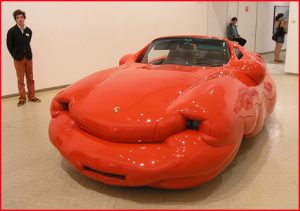
Imagine how far it might go – if it didn’t weigh nearly as much as a ’70s-era V8-powered muscle car . . .
Still, it goes very far. On the highway, you can travel more than 500 miles on just 14.5 gallons and in the city, more than 400 miles. Which is much farther, by the way, than any EeeeeeeeVeeeeee can go on a charge.
But, there’s a catch.
It takes a lot of boost to make 1.5 liters make as much power as a 7.5 liter V8. While the latter may have been fuel-inefficient, it was also understressed. Its internals – pistons (and rings), connecting rods, bearings, etc.) weren’t under a lot of pressure – which is another way to define boost. In former times, turbos were used as power increasers, almost always in a high-performance application (viz, the Porsche 911 turbo). Lately, they are used as replacements for displacement.
To get the same power – out of less engine. For the sake of using less gas – when the boost isn’t on. Turbocharging ever-smaller engines is how the car companies comply with ever-more-demanding federal regulations regarding how little gas new cars must use (as well as “emit,” as regards the dread inert gas C02) while also maintaining the power and performance buyers expect.
Without the turbo, a 1.5 liter three cylinder engine attempting to move close to two tons would be like Pee Wee Herman trying to bench press 300 pounds.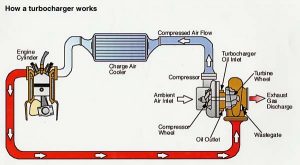
But, with the the turbo comes boost – and pressure. That means stress – which may mean shorter engine life, more (and sooner) costly repairs. The larger fours in others in the Rogue’s class, such as the 2.5 liter fours that come standard in the Mazda CX-5 and Hyundai Tucson – make less power (187) and don’t rate mileage as high (only 24 city, 30 highway in the case of the Mazda) but they aren’t under as much pressure – not having turbos.
There is also the Toyota RAV4’s larger 2.5 liter four to consider. It doesn’t have a turbo, either – yet it still manages to make 203 horsepower and return 27 city, 35 highway. It’s also paired with a conventional (non-CVT) eight speed automatic. The Rogue’s three come only with a CVT.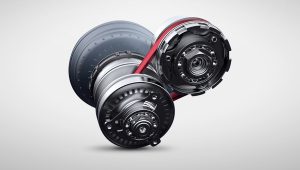
The latter is probably why – in spite of its little engine being stronger than the engines in rivals like the Tucson and CX-5 – the Rogue is only rated to pull 1,500 pounds, maximum. Both the Mazda and the Hyundai crossovers can pull up to 2,000 pounds and the RAV4 can pull as much as 3,500 pounds.
CVTs have gotten more reliable in general – but they aren’t the ticket for towing because of the additional loading that places on the band/belt that is expanding and contracting to enable the tranny to continuously vary its ratios for maximum fuel efficiency – which is what CVTs were designed to maximize.
On The Road
The Rogue feels much larger-engined than it is, courtesy of all that boost – 15 PSI – which summons 225 ft.-lbs. of torque at just 2,800 RPM. This eliminates the chief complaint of many with regard to CVT transmissions, that being the tendency of the transmission to let the engine rev to near-redline (5,000-plus RPM) and hold it there – because otherwise there’s no power there.
In the Rogue, little bit of pedal summons all that torque – the 1.3’s output is comparable to that produced by a small V6 – which is ample to move almost two tons of compact-crossover without feeling (or sounding) as if it’s straining.
The strain is inside the engine, of course.
But the point is that for commuting in stop-and-go driving especially, the Rogue is well-suited for its role as a transportation appliance. It isn’t exciting to drive – but it’s also not frustrating to drive. It goes decently when you need it to (0-60 takes just under 8 seconds) and it doesn’t use much gas when you don’t need it to. Over the course of a weeklong test drive, I found I could even do a little better than the EPA’s stated city/highway numbers, if I worked at it – by doing my best not to work the little engine more than necessary to keep up with traffic.
But if you do work it, you may find your mileage turns out to be less than the EPA’s stated city/highway numbers – because even though it’s just a 1.3 liter three, when it’s on boost, that little engine is moving as much air – and eating as much or even more gas – as a much larger four that isn’t boosted (viz, the Toyota RAV4’s 2.5 liter engine).
But the Toyota’s four always “emits” more gas (C02) being always larger – and that is probably why it won’t be around for much longer. Ditto the also-larger fours in other small crossovers like the Tucson and CX-5.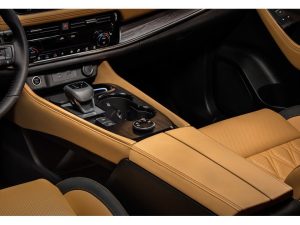
Every Rogue comes with Safety Shield 360, Nissan’s marketing term for the slew of driver-interference “technologies” it includes as standard equipment, meaning you cannot avoid this equipment. The slew includes Lane Departure Warning, Forward Collision Mitigation and Rear Automatic Braking – all of which presume you’re so addled or incompetent that you cannot keep your vehicle in its travel lane, or stop if a car ahead stops or avoid backing up over someone without “assistance.”
Every new car comes with these “assists,” unfortunately. It being just that – unfortunate – because these “assists” tend to foster drivers who need such “assistance” while annoying those who do not.
The good news you can turn off/disable most of these, which makes driving the Rogue a lot more pleasant once you have.
The Rogue does not look very Roguish, does it?
In fact, it is very practical. More so, as it turns out, than some of the more roguish-looking small crossovers in the class, especially the Mazda CX-5. That one is a looker. But look inside. The Mazda sacrifices practicality for the sake of outward appearances. Just 59.3 cubic feet of total cargo capacity – vs. 74.1 for the Rogue.
Of the models it competes directly with, only the Hyundai Tucson offers more practicality – and that just barely (74.8 cubic cubic feet of total cargo capacity). The disparity is especially striking vs. two other models that sort-of overlap or straddle the Rogue, those two being the slightly smaller VW Taos and the slightly larger VW Tiguan. The latter only has 65.3 cubic feet of total cargo capacity (and just 12 cubic feet behind its second, vs. 31.6 for the Nissan) while the former has only 158 horsepower out of 1.5 liters of four cylinder engine (and 65.9 cubic feet of total cargo capacity). 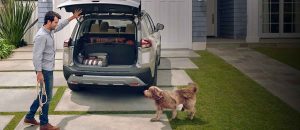
The Rogue is kind of roguish, in its own way.
And there are some slightly roguish styling touches, too – such as the flat-bottomed steering wheel that looks a lot more roguish, actually, than the one Nissan put into the new Z car.
There’s also an off-center gear selector on top of a “floating” center console – and a 12v power point still conveniently located where the driver can see and reach it, just ahead of the gear selector. In a growing number of new cars, the 12V power point is located behind the driver, in the backseat area or some other hard-to-reach place. This makes using roguish devices such as radar detectors (these usually plug in to 12V outlets) harder to do. 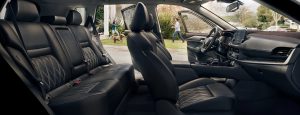
One not-roguish thing is the electric-automatic parking brake (also located on the center console). It’s either on – or off. As opposed to a manual, pull-up emergency brake, which makes it possible to do roguish things such as lock up the rear wheels, so as to execute a 90 degree turn (or a 180 degree turn).
The Rest
One of the driver “assistance” features you can avoid is Lane Keep Assist – which doesn’t just beep and flash lights at you if you change lanes (and cross painted lines) without signaling first but also “corrects” your steering by fighting your steering inputs. It does not come standard with the base S trim. Which does come standard with pretty much all of the things a transportation appliance ought to have, such as AC, power windows and locks, etc. The four speaker stereo that comes in the S is mediocre but upgrading to a better stereo (and speakers) is easier than getting rid of “advanced driver assistance technology.”
Cheaper, too.
Save the roughly $2k more it takes to buy a Rogue SV – and Lane Keep Assist – and use it to buy a really good stereo (and speakers) from Crutchfield for your Rogue S instead. 
If you want things like a bigger touchscreen – and wheels – the SV and up trims offers those.
The Bottom Line
Now you know at least two reasons why people like the Rogue. Notwithstanding that it’s about as roguish as tearing off one of those mattress tags that says you’re not supposed to.
. . .
Got a question about cars, Libertarian politics – or anything else? Click on the “ask Eric” link and send ’em in! Or email me at [email protected] if the @!** “ask Eric” button doesn’t work!
If you like what you’ve found here please consider supporting EPautos.
We depend on you to keep the wheels turning!
Our donate button is here.
If you prefer not to use PayPal, our mailing address is:
EPautos
721 Hummingbird Lane SE
Copper Hill, VA 24079
PS: Get an EPautos magnet or sticker or coaster in return for a $20 or more one-time donation or a $10 or more monthly recurring donation. (Please be sure to tell us you want a magnet or sticker or coaster – and also, provide an address, so we know where to mail the thing!)
My eBook about car buying (new and used) is also available for your favorite price – free! Click here. If that fails, email me at [email protected] and I will send you a copy directly!




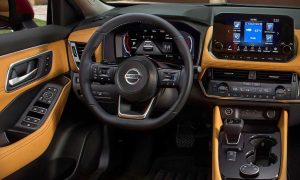







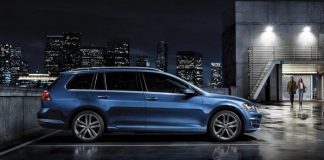
Eric, I love your phrase, “driver interference technologies”, I’m going to steal it.
I don’t get the fascination with the current Rogue either
3-cylinder, because that’s what consumers demand, right? No?
‘Just three cylinders and only 1.5 liters.’ — eric
This fresh downgrade from the former 2.5-liter I4 debuted last year in the Rogue. Now the pint-sized I3 is called the KR15DDT engine.
Too bad its sister I4 engine, the KR20DDET, isn’t available. Both these engines have variable compression ratio, from 14:1 for economy to 8:1 under load. Variable CR adds 22 lbs of linkage to the crankshaft/connecting rod assembly, but the performance benefits are considerable.
Variable compression ratio was conceived a hundred years ago, in the 1920s. Mechanically it’s no big deal; the control algorithm (now computerized) was the challenge.
https://www.topspeed.com/cars/car-news/here-s-how-nissan-s-variable-compression-technology-combines-the-best-of-gasoline-and-diesel-engines/
Probably the KR20DDET would fit in muh old Frontier, boosting its horsepower from 150 to 250. But the black box to control it wouldn’t compute.
The Bronco Sport is accessible in four trim levels – Base, Big Bend, Outer Banks, and Badlands. All the models feature a 1.5L EcoBoost engine except the Badlands, which carries a 2.0L EcoBoost mill.
The standard 1.5L turbocharged three-cylinder yields 181 horsepower and 190 lb-ft of torque,
less power then the rogue 3 cyl. bronco weighs 3456 lb.
a 3 cylinder 1.5 lt. in a 3456 lb bronco….lol
Eric you do such a good job of putting lipstick on a pig. You try so hard and like I say you do a very good job, but how many different ways can you compliment someone’s toaster or ugly baby? Eventually, you can just say, here’s a little roundish thing with wheels, it will take you to work and the grocery store, that’s about it—and don’t plan on any family coming along, maybe one person. Ha! Maybe these vehicles are also part of their depopulation scheme?
Told you before I read old National Geographics (it’s a sickness), but seeing the ads for all those huge cars with a huge trunk makes a person sick. Most of them were so good looking, some weren’t. Also seeing the ads for the smaller cars with amazing gas mileage as you’ve noted before. And also as you’ve said, if the new cars weren’t so heavy you could have better gas mileage. I remember the first time I saw a Honda Civic—I was amazed. It was so cute, a friend had it. Fun to ride in and fun to drive.